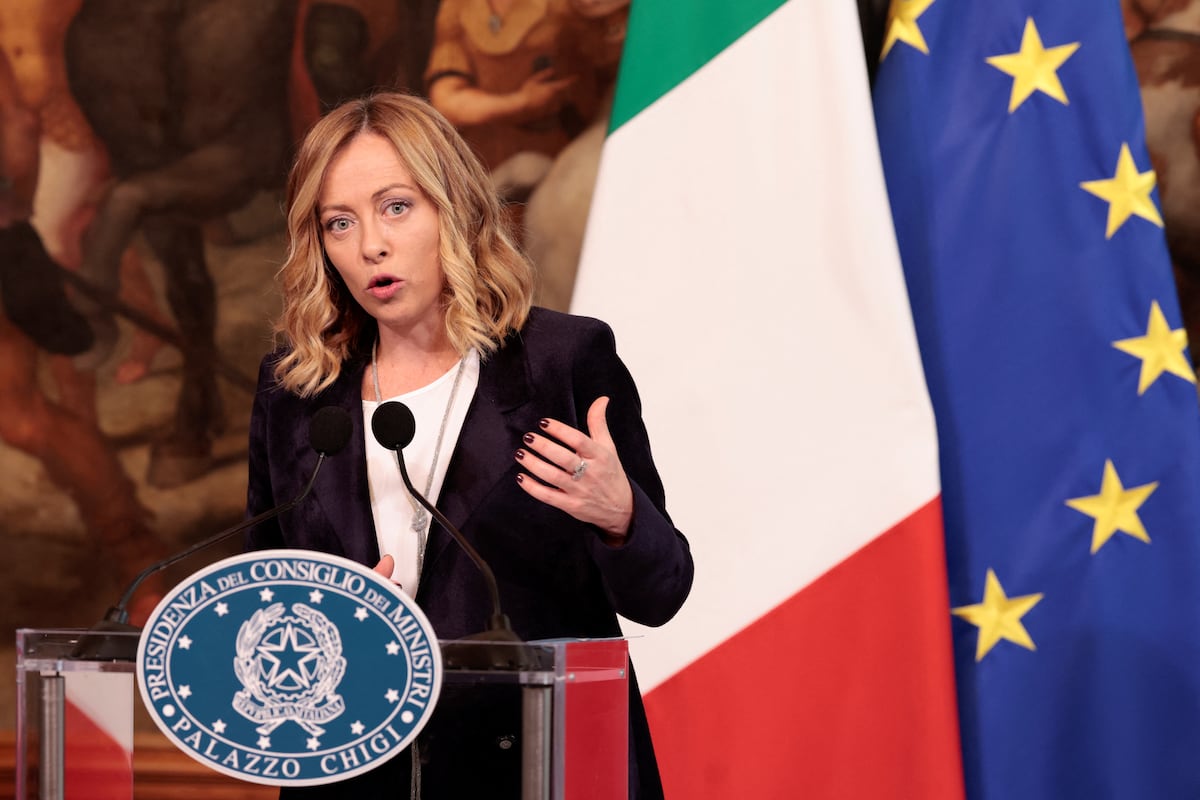A second deportation from Italy to Albania of migrants rescued at sea is already underway, after the failure of the first, but as soon as it has begun, it can be said that it sounds like a fiasco again and further questions the viability of the far-right Government’s plan. by Giorgia Meloni, which is once again very much in doubt. If in the first transfer a military ship with a crew of about 70 people was mobilized to take only 16 migrants to the port of Shengjin, this time there are even fewer, on board the same ship: eight, according to the Italian media, of the that the nationality has not yet been revealed and that they are expected to arrive tomorrow, Thursday, or Friday, in the Balkan country.
It is a tiny proportion of all those who have arrived on the island of Lampedusa in two days, more than 1,200 people, and a tiny group for what is planned in the large Gjadër internment camp, in Albania, with more than 1,000 places. . That is to say, it is confirmed that in reality very few of the migrants meet the conditions to be deported. And those few still must pass the filter of the immigration court in Rome, which must validate their retention within 48 hours, once they arrive on land, and on the first occasion it brought down the entire operation.
An estimated cost of one billion
The small number of migrants transferred, despite the fact that it was expected that this time it would be a larger group, once again questions the cost of the operation. Italy plans an investment for the Gjadër internment camp, an hour’s drive north of Tirana, of 653.3 million euros over five years. Of them, 260 million are only for the sending, salary and maintenance of the personnel, 295 officials and agents deployed to the site and housed in a five-star hotel complex. Although the opposition says that it is a minimum estimated figure, and that in the end the budget will reach one billion. With the first transfer of 16 migrants, the opposition has already calculated an expense of 18,000 euros for each of them, although the Minister of the Interior, Matteo Piantedosi, later assured that it was 8,400 euros for the entire trip. In any case, now it is about half the number of people.
The key to the fact that Italy only manages to transfer small groups to Albania lies in the rigorous selection criteria, which greatly limit the final number and were already expected to hamper the entire plan, which the EU is following with interest because it intends to repeat the formula. The controversial rapid protocol of detention at the border and subsequent rejection of the asylum request can only be applied to male, adult and healthy migrants, rescued in international waters by Italian flag vessels (not, for example, by foreign NGOs). And, above all, they must come from 19 countries that Italy considers safe, that respect human rights, which is why the authorities anticipate that it will reject their asylum applications and they can enter that rapid protocol.
However, this is where there is still a bigger obstacle, because according to EU criteria, only seven of those 19 countries can actually be classified as safe. This was established by a recent October ruling by the Court of Justice of the EU, which the Court of Rome relied on last month to reject the retention of the first migrants deported to Albania. The resolution argued that if basic rights are violated in a country in an area or a group is persecuted, the entire country should be considered unsafe. In this way, it left out of the list the main countries of origin of arrivals by sea to Italy, such as Bangladesh, Egypt or Tunisia. In short, it rendered the entire Albania model useless.
The Meloni Government reacted to the judicial setback with a decree law that, it argued, reinforced the obligation of the magistrates to apply Italian regulations, and not European regulations. The vast majority of experts and all judicial associations have recalled, on the contrary, that community law is what is valid in the event of a conflict. Given the new legal clash that is looming, last week a Bologna court that had to decide on an asylum application already sent a query to the Luxembourg court to clarify what it should do. In the midst of this confrontation between the Government and the courts and European asylum standards, this second deportation arrives.







